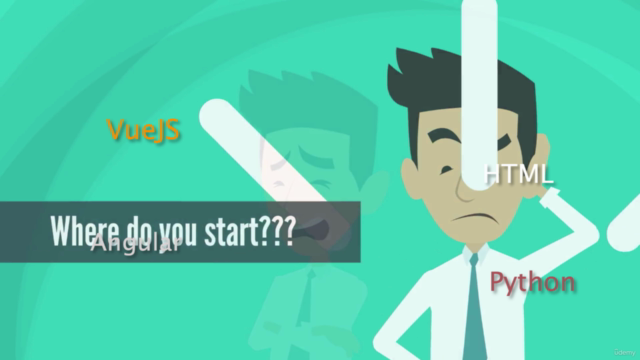The Complete Ruby on Rails Developer Course

Why take this course?
Based on the detailed description provided, it seems like you are outlining the structure and content of a comprehensive Ruby on Rails course. Here's a structured summary of the course outline with key features and technologies covered:
Course Structure:
-
Introduction to Ruby Programming:
- Basics of the Ruby language, including syntax, control structures, data types, and object-oriented programming concepts.
- Building mini-projects to reinforce learning.
-
Ruby on Rails Fundamentals:
- Understanding MVC (Model-View-Controller) architecture.
- Setting up a local development environment on both Mac and Windows systems.
-
Version Control with Git and Github:
- Introduction to version control using Git, with a focus on managing code with Github.
-
Web Technologies:
- Exploring front-end frameworks like Bootstrap, Semantic UI, and MaterializeCSS.
- Using Ajax, Jquery, and JavaScript for interactive web interfaces.
-
Database Management:
- Working with ActiveRecord to handle database associations (one-to-many, many-to-many, self-referential).
-
User Authentication:
- Building authentication systems from scratch and later using Devise for secure user management.
-
APIs and External Services:
- Integrating with external APIs such as Stripe for payment processing, SendGrid for email functionality, and Amazon Web Services S3 for file storage.
-
Email and Payment Functionality:
- Implementing production-ready email confirmation and handling payments using Stripe API.
-
Rapid Prototyping with Rails Generators:
- Utilizing Rails generators to speed up development.
-
Multi-Tenancy in SaaS Applications:
- Implementing multi-tenancy in a Software as a Service (SaaS) application using tools like Milia.
-
Deployment and Scaling:
- Deploying applications to Heroku for production use.
- Handling scalability and performance considerations.
-
Testing and Quality Assurance:
- Writing test suites with Rails' built-in testing tools (Unit, Functional, Integration).
-
Security Best Practices:
- Ensuring secure handling of user credentials and sensitive data.
-
Project Work:
- Building several mini-projects, culminating in a full SaaS project management app.
Key Features of the Course:
- Over 250 lectures and 40+ hours of video content.
- Live support and a community for interaction and help.
- Wire-framing tools to aid in design planning.
- Comprehensive coverage from scratch, with a transition to using generators for rapid development.
- Integration of modern JavaScript frameworks (Ajax, Jquery, plain JavaScript).
- UI styling with Bootstrap, Semantic UI, and MaterializeCSS.
- Fully automated test suites to ensure application stability and reliability.
This course is designed to take students from complete beginners in Ruby and Rails to building a full-fledged, scalable SaaS application, with a strong emphasis on modern web development practices and security considerations. It's a complete learning path for aspiring Rails developers looking to launch a startup or build robust web applications.
Course Gallery




Loading charts...
Comidoc Review
Our Verdict
The Complete Ruby on Rails Developer Course is a robust resource for mastering Ruby on Rails, offering an extensive curriculum with practical projects and engaging lessons. Nonetheless, its lack of updates since Rails 7 may pose challenges in following the course materials accurately, affecting overall user experience. Students are encouraged to be prepared for compatibility issues stemming from this outdated content and seek assistance through student discussions while navigating the course.
What We Liked
- In-depth coverage of Ruby on Rails with practical projects to reinforce learning
- Comprehensive curriculum prepares students for professional web application development
- Engaging and structured lessons facilitated by an experienced instructor
- Availability of student discussions fosters peer support and collaboration
Potential Drawbacks
- Course materials have not been updated since Rails 7 release, causing compatibility issues
- Absence of instructor engagement in course discussions may leave students unassisted
- Some projects require third-party services with costs or limitations that hinder completion
- Portions of the course may feel outdated, lacking alignment with current industry standards